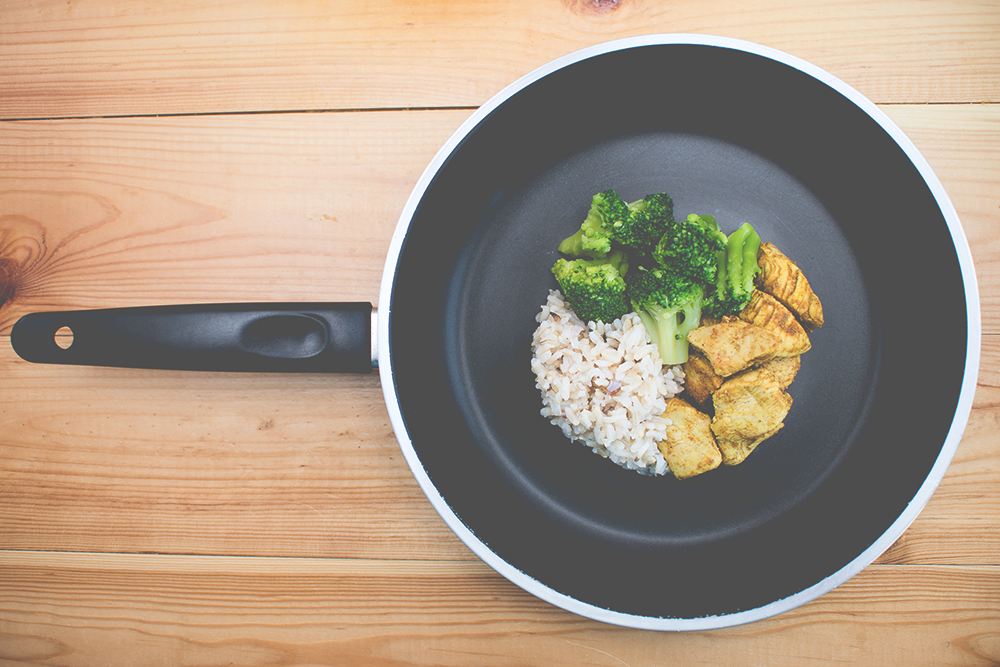Trying to go plant-based, but not ready to go all in? It doesn’t have to be all or nothing, here’s how you can make it fit for you.
BY: LINDSEY KANE, MS, RD, LDN
If you are looking to improve your health, but refuse to bid farewell to meat, you are not alone. With so much research and media focused around a plant-based diet, it’s no wonder why so many people feel trapped in the meaty catch-22.
But have no fear!
Choosing to consume meat doesn’t automatically disqualify you from the elusive “plant-based eating club”. There’s a way to reap all of the benefits of plant-based foods, while still enjoying animal proteins. Use these practical strategies to help you achieve a nourishing and well-balanced meal to find your happy “meatium”.
1. Quality over Quantity
Think organic, free-range, and grass-fed. Bite into a juicy burger made with grass-fed beef and the concept of quality over quantity will be undeniable. No different than humans, an animal’s health is a reflection of the food it eats. Studies have shown that the quality of the animal’s life has a huge impact on the quality of its meat. A stressful life can yield very tense and tough meat, especially when antibiotics and hormones are added into the mix. So it’s no surprise that animals raised on a nutrient-rich, grass-fed diet produce leaner meats that are lower in saturated fat, higher in anti-inflammatory omega 3’s, and richer in Vitamin E.
Selecting high quality meat comes at a price, but this works to our advantage as it simultaneously helps us stay mindful of portions. Since the recommended serving size of animal protein is 3-4 ounces (about the size of a deck of cards), this is all the more reason to make every bite count with great texture, mouth-watering flavor, and maximal nutrient-density. Remember the concept of productive spending: our food purchases should focus on “how can I maximize the number of nutritional benefits per dollar?” rather than “how can I maximize the volume of food per dollar”.
2. Lean towards Lean
While there’s nothing wrong with enjoying a fatty, rib-eye steak every once in awhile, focusing on leaner cuts in your day-to-day will help you from going overboard on saturated fats. It may come as a surprise, but bison is an outstanding red meat alternative for beef, delivering more protein, less saturated fat, and a solid punch of iron, zinc, and selenium, a powerful antioxidant. For ground meat, instead of using 80% lean, kick it up a notch and reach for 90%. Just like switching from whole milk or 2% milk to 1% or skim, it may feel funny at first. But give your taste buds a few weeks to acclimate and this will become your new normal.
To keep it extra lean, skip the skin. Worried about losing flavor? A fair compromise would be to buy meat with the skin on, and then remove the skin after cooking. (Winner, winner chicken dinner!)
3. Grill and Flavor.
How you prepare your meat is just as important as your meat selection. Now is the perfect time to fire up the grill instead of pan-frying, try grilling, broiling, or baking meat. Marinades can also be a great way to add more flavor to your meat. Be mindful of soaking your meats in store-bought marinades, which are often loaded in sugar, salt, preservatives, and highly refined oils.
Reach for herbs, spices, wine, vinegars, citrus, and aromatics like garlic, shallots, or ginger to pack the flavor. Or use something bright and fresh like a chimichurri, pesto, or romesco sauce. A simple short cut is to reserve some of your marinade off to the side and use this as your condiment or garnish.
4. Play up Perception
Feeling deprived of meat as you try to go more plant-based? So much of what we choose to eat and how much we eat is based on our perceptions. The good news is, with a few simple tricks, you can make your plate give off the perception that there’s plenty of meat in your meal.
Allow colorful, nutrient-dense, and fiber-rich plants to own at least half of the real estate on your plate. Think veggies, whole grains, beans, nuts, and seeds. Full of fiber, vitamins, minerals and antioxidants, these powerful foods are the perfect complement to your high quality, flavor-packed, healthy portion of meat. Incorporating meat into a one-dish meal can make a smaller portion of meat less noticeable. For example, mix 3-4 oz of diced chicken scattered throughout a brown rice and broccoli stir fry. Salads, rice bowls, stir-fry’s, soups, and chilis are all great one-dish meals that reduction in your meat portions.
Still missing that 8 oz portion of meat?
Include veggie-based “meat mimickers” into your meal, such as eggplant and mushrooms. They offer a very savory flavor and meaty texture, giving your mouth the allure of meat.
Try these strategies when crafting your next meal and you’re guaranteed to find a plate in front of you that’s more beautiful, texturally diverse, and satiating than ever before.
Keep it balanced, and feel happier for it!
Adapted from the original article.
HEADER IMAGE: PATRYK DZIEJMA
Lindsey Kane, MS, RD, LDN is a San Francisco-based Registered Dietitian helping others live a stress-free, balanced, and thriving life. By getting to know her clients inside and out, Lindsey identifies the opportunities within their everyday lifestyle to integrate subtle changes that create lasting, impactful results. Learn more at Bite For Change!

